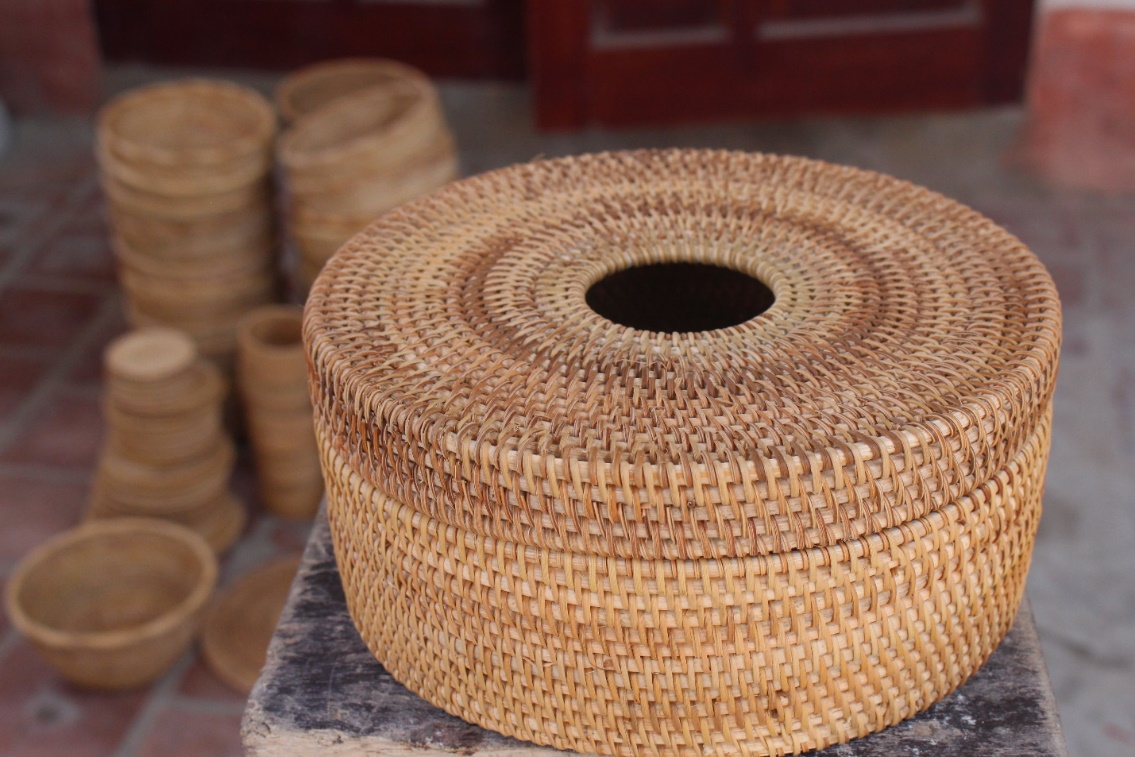News
Bamboo and rattan industry and billions of dollars
According to statistics from the Ministry of Industry and Trade, Vietnamese bamboo and rattan products have been exported (exported) to over 120 countries. In which, the US market is at the lead with over 19% market share and Japan with nearly 17% market share. However, Vietnam’s bamboo and rattan export turnover currently accounts for less than 3% of the world market.
No generic branding
Mr. Luu Duy Dan, Chairman of the Vietnam Craft Villages Association, said that there are 713 bamboo and rattan crafting villages nationwide, accounting for 24% of the total number of handicraft villages, attracting about 350 thousand workers.
From 2009 up to now, the famous bamboo and rattan crafting villages such as Phu Nghia, Chuong Hat, Vat village, Chang Son, Phu Tuc, Hue hat … have faced many difficulties due to uncertain market, unstable material source. production in moderation.
While consumers in developed countries prefer simple and blocky products, Vietnamese bamboo and rattan products are often cumbersome, detailed and very angular, winding, … so it is difficult to have a market. lasting. We have yet to build a common brand for Vietnamese bamboo products.
Over 80% of manufacturing establishments in the bamboo and rattan industry do not have enough capital to innovate techniques and expand production scale, most of them using outdated technology and equipment, labor productivity and quality of production. low products, lack of diversity in designs, limiting competitiveness in both domestic and export markets.
According to Mr. Nguyen Manh Dung, Head of Processing Department, Department of Agricultural, Forestry and Fishery Processing and Salt Industry (Ministry of Agriculture and Rural Development), from rattan and bamboo, hundreds of different products can be processed for domestic consumption. location and export.
Specifically, these materials can be produced into two large groups: traditional products such as bamboo shoots for food, handicrafts, blinds, mats, toothpicks, paper …; new products such as pressed bamboo for flooring and furniture, pressed bamboo for construction, making activated carbon, making fibers, … In particular, industrial processed products from bamboo such as laminated and special bamboo Although bamboo is just researched and put into production, it has a potential position in both domestic and foreign markets, with very high added value.
Development of raw materials and brands
Mr. Nguyen Trong Thua, Director of the Agro-forestry, Fisheries and Salt Industry Processing and Trade Department, said that the country currently has about 1.4 million hectares of bamboo, of which only about 6% of the area is planted forest, the rest is forest. nature. Provinces with large and concentrated bamboo reserves are Thanh Hoa, Lam Dong, Kon Tum, Nghe An, Tuyen Quang, Dak Nong, Binh Phuoc, Lai Chau, Son La and Yen Bai. Every year, Vietnam consumes about 400-500 million bamboo trees for different purposes.
In the field survey in 28 provinces nationwide, it is estimated that rattan resources in Vietnam have a total area of 381,936 ha. In which, the North Central region has the most clouds (201,076ha), followed by the South Central region with the area of rattan 180,270 ha. The production of rattan that can be harvested nationwide is estimated at about 36,510 tons / year, while the actual consumption demand is about 70,000 tons / year, which means that every year we have to import over 33,000 tons of rattan.
Bamboos, rattans are non-timber forest products that can be planted into specialized raw material areas or conserved for sustainable exploitation. Compared with other trees, bamboo has the outstanding advantage of its growth rate very fast, can be harvested after 3-4 years, high yield 4-12 tons / ha / year. The harvesting cycle of bamboo and neohouzeaua is very short, from 2-3 years.
With market requirements, from now to 2020 and 2030, the product structure of the bamboo processing industry should be 30% for traditional products and 70% for new products.
“Blocked bamboo products to replace wood in furniture production are increasingly popular, because their durability is not less beautiful than wood, but the selling price is much cheaper. But in the global market, bamboo furniture products make up only 3% of the total $ 100 billion market share. Vietnam needs to focus on this new product line. If we have a reasonable product structure and strategy, we can capture 8-10% of the world market, the bamboo and rattan processing industry in Vietnam will reach $ 1 billion in the future “, Mr. Dung said. show.
Thus, in parallel with the development, the gap in demand for bamboo and rattan products in the world is still quite large. Strengthening business capacity for this industry, moving towards creating a brand of Vietnamese bamboo and rattan to go straight into the gap in demand for bamboo and rattan products in the world.

